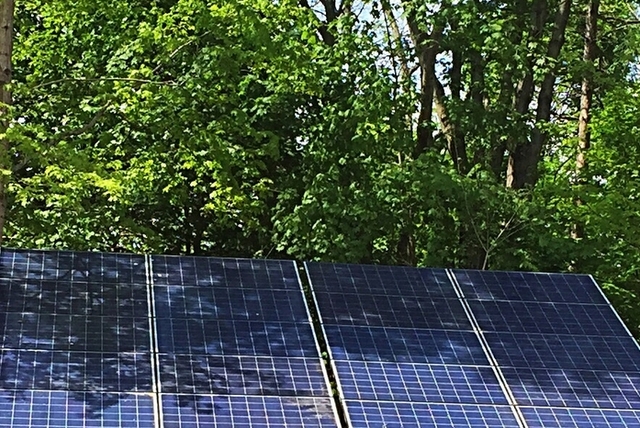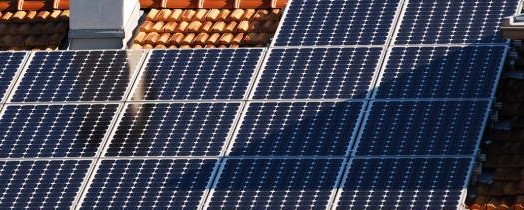Solar panels are a great way to get clean energy that is becoming increasingly popular. However, one challenge that homeowners and businesses face is the impact of shading on solar panels. Even partial shading can significantly reduce the efficiency of solar panels. This article will explore the impact of solar panel shading and various solutions to overcome this challenge.
What is Solar Panel Shading?
Shading on solar panels is the obstruction of sunlight falling on the panel. This obstruction can come from nearby trees, buildings, or other objects that cast shadows on the solar panel. When a portion of the solar panel is shaded, the overall efficiency of the panel is reduced.
The Impact of Shading on Solar Panels
Shading on solar panels can have a significant impact on their performance. Even a small amount of shading can cause a reduction in the output of the solar panel. This is because shading affects the flow of electricity in the panel. When a part of the panel is in the shade, the cells in that part of the panel make less power than the cells in the sun.
This creates a bottleneck in the panel, which reduces the overall output of the panel.
Solutions for Solar Panel Shading
Solar Panel Placement
One of the best ways to reduce shading on solar panels is to carefully consider their placement. Solar panels should be placed in an area where they will get the most sunshine. This will ensure that nearby objects do not shade the panels.
Trimming Trees
Trees are a common source of shading on solar panels. Trimming the trees around the solar panels can significantly reduce shading. The trees should be trimmed to ensure they do not grow back and cast a shadow on the panel.
Using Shade Tolerant Panels
Another solution to shading on solar panels is to use shade-tolerant panels. These panels are made so they can still make power, even if some are in the shade.
Shade-tolerant panels use advanced technology that allows them to bypass the shaded cells and produce electricity from the unshaded cells.
Micro-Inverters
Micro-inverters are a type of inverter that is installed on each solar panel. These inverters convert the DC electricity generated by the panel into AC electricity. The micro-inverter only lowers the output of the shaded cells when the panel is partially shaded. This ensures that the unshaded cells continue to produce electricity at their maximum capacity.
Bifacial Panels
Solar panels that produce energy on both sides are called bifacial panels. This allows the panel to produce electricity even when one side of the panel is shaded. Bifacial panels are an excellent solution for shading on solar panels.

Solar Panel Tracking Systems
Another solution to shading on solar panels is to use solar panel tracking systems. These systems are designed to move the solar panels to follow the sun’s path throughout the day. This ensures that the solar panels always receive maximum sunlight, even when nearby objects cast shadows on the panel.
Reflective Coatings
Reflective coatings are another solution to shading on solar panels. These coatings are applied to the surface of the solar panels, which reflect sunlight onto the shaded areas of the panel. This increases the overall output of the panel, even when a portion of the panel is shaded.
Smart Modules
Advanced technology is used in smart modules, a form of solar panel, to maximize panel output. These modules use micro-inverters and optimizers to maximize the panel’s electricity production, even when a portion of the panel is shaded.
Solar Panel Cleaning
The effectiveness of solar panels might be diminished if they are dirty. When dirt, dust, and other particles settle on solar panels, they block some of the sunlight that would otherwise reach the solar cells. Solar panels can perform better and last longer if they are cleaned regularly.
Professional Design and Installation
Finally, one of the best ways to ensure the maximum efficiency of solar panels is to hire a professional to design and install the system. Experts can assess the area and position the solar panels to get the most sunshine possible. They can also recommend the best solutions for shading on solar panels, such as trimming trees or using shade-tolerant panels.
The Importance of Addressing Solar Panel Shading
Addressing solar panel shading is critical to ensure that solar panels operate efficiently. When solar panels are shaded, their output is reduced, and the system’s overall efficiency is compromised. This can significantly reduce the financial benefits of installing solar panels and extend the system’s payback period.
In addition to financial benefits, solar panels also offer significant environmental benefits. Solar panels mitigate the release of harmful gases into the atmosphere by converting sunlight into usable electricity. By maximizing the efficiency of solar panels, homeowners and businesses can reduce their carbon footprint and contribute to a cleaner, more sustainable future.
Conclusion
Solar panel shading can significantly impact the performance of solar panels. However, several solutions to overcome this challenge include carefully placing panels, trimming trees, and using shade-tolerant panels, micro-inverters, and bifacial panels. By implementing these solutions, homeowners and businesses can maximize the efficiency of their solar panels and enjoy the benefits of renewable energy.
FAQS
Can solar panels work during cloudy days?
Yes, solar panels can still produce electricity on cloudy days, although the output may be lower than on sunny days.
How long do solar panels keep working?
Solar panels usually last between 25 and 30 years, but some panels can last longer with proper care.
Do I need to clean the screens o my roof?
Yes, solar panels should be cleaned regularly to get rid of dirt, dust, and other things that can make them work less well.
How much energy can be made by a solar panel?
A solar panel’s energy relies on many things, such as its size, how well it works, and how much sunlight it gets.
Can solar panels work at night?
No, solar panels require sunlight to produce electricity, so they do not work at night.
Can solar panels be put up on a flat roof?
Yes, solar panels can be installed on flat roofs, although special mounting systems may be required.
Can I use solar panels during a power outage?
If you have a backup battery system, you can use solar panels to power your most important tools when the power goes out.
Are there any incentives for installing solar panels?
Yes, many governments offer incentives for installing solar panels, including tax credits and rebates.
Do solar panels require maintenance?
Yes, solar panels require regular maintenance to ensure they are working efficiently, including cleaning and inspection.
How much does it cost to install solar panels?
The cost of putting solar panels depends on a number of things, such as the size of the system and where it is installed. But the price has gone down a lot in recent years, making it easier for families and businesses to pay.

